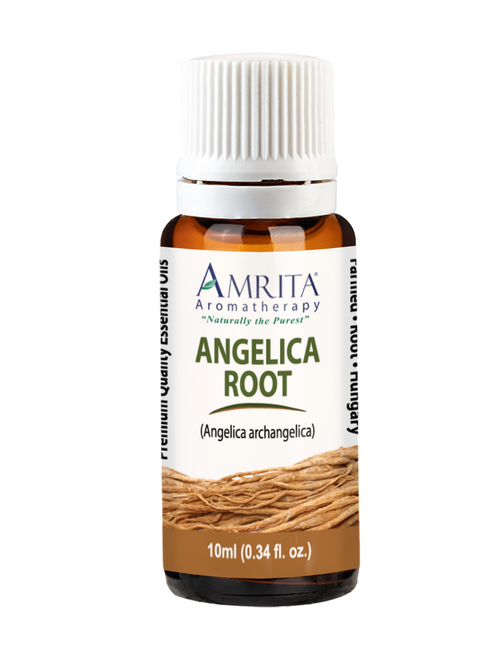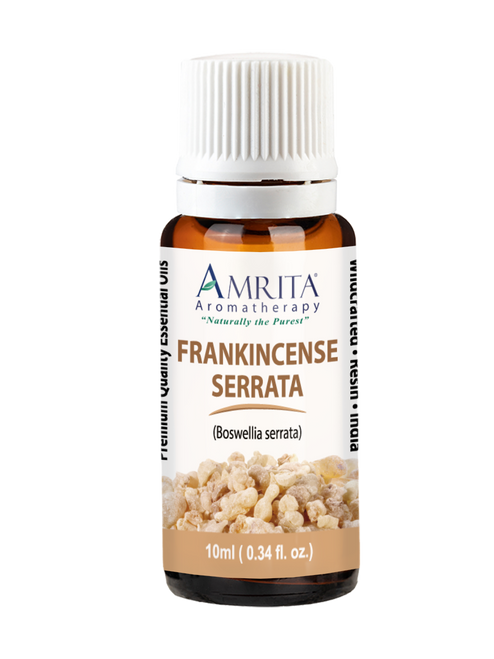- Other Names
- Wild Celery, Norwegian Angelica, and Female Ginseng
- Farming Method
- Conventional
- Plant Part
- Root
- Country of Origin
- Hungary
- Application Method
- Diffusion, Inhalation, Massage, and Topical
- Scientific Name
- Angelica archangel
- Extraction Method
- Steam Distilled
About the Plant:
Angelica, a towering and robust biennial herb, bears resemblance to Dong Quai or Ginseng in stature and vitality. Belonging to the carrot family, this perennial plant, also known as Wild Celery, boasts globe-like clusters of pale green flowers and emits a sweetly scented aroma from its stems and roots. Its fragrance is described as earthy, musky, and slightly peppery, with subtle citrus undertones.
Angelica archangelica, or garden angelica, is a biennial species from the Apiaceae family, cultivated for its edible stems and roots. During its second year, it develops a fluted stem reaching heights of over 8 feet, with the root prized for its flavoring properties. Its leaves, characterized by finely toothed leaflets grouped into intricate formations, give way to small, yellowish-green flowers that bloom in large, globular umbels.
Thriving in damp soil near water sources, garden Angelica is known for its culinary and medicinal applications dating back centuries. Legend has it that an archangel revealed the plant's medicinal qualities to humanity, inspiring its species name, archangelica. Resembling a wild carrot, its long, spindle-shaped root, leaves, seeds, and young stems exude a licorice-like flavor.
This resilient herb flourishes in moderately cool climates, thriving in part shade or full sun in northern regions. Preferring consistently moist soil, it's essential to prevent drying out between waterings. Garden Angelica typically produces foliage in its first year and flowers in the second, culminating in seed ripening before the plant's life cycle ends. Propagation is achieved through seed or root cuttings during the second year.
Where It Grows:
Angelica Root, a versatile flowering plant, thrives in diverse regions worldwide. Native to China and various East Asian countries, it holds a prominent place in traditional medicine, particularly in treating female hormonal issues.*
Angelica archangelica, specifically, grows abundantly in regions such as Russia, Finland, Sweden, Norway, Denmark, Greenland, the Faroe Islands, and Iceland, predominantly in their northern territories. While it is cultivated in France, notably in the marshlands near Niort in the department Deux-Sèvres, commercially available Angelica often originates from Hungary, Romania, Bulgaria, Germany, and Poland. Beyond Europe, Angelica archangelica can also be found growing native in regions spanning from the Himalayas to Russia and scattered across Europe.
Traditional Uses and Lore:
Angelica Root, a revered medicinal and culinary herb, traces its origins to the 10th century when it was first utilized by tribal communities in Scandinavia. Recognized as a versatile remedy, it was embraced for its diverse applications, ranging from digestive relief to asthma management.* Often referred to as Norwegian Celery, Angelica Root played a pivotal role in indigenous Scandinavian cultures, serving not only as a medicinal herb but also finding its way into culinary delicacies and even musical instruments.
Throughout Europe, the Himalayas, and Russia, Angelica Root has held a longstanding reputation as a potent detoxifying agent for centuries.* Legends from Europe's Middle Ages further heightened its acclaim, with tales of its purported ability to combat the bubonic plague.* Herbal texts from antiquity depict Angelica as a purifying tonic, renowned for expelling toxins while alleviating conditions such as gout, rheumatism, and water retention.*
From its cultivation as a vegetable and medicinal plant in the 10th century to its peak of popularity in Scandinavia by the 12th century, Angelica Root has maintained a significant presence, particularly within Sámi culture. Once a staple in Sámi cuisine, it was known as "kvanne," adding flavor to dishes ranging from liqueurs and aquavits to omelets and trout, while its bright-green stems were candied for both culinary and decorative purposes.
Angelica's distinctive aromatic profile sets it apart from other herbs within the Umbelliferae family, exuding a pleasant perfume reminiscent of Musk and Juniper. Its roots have become a staple botanical in gin distillation, imparting a unique aromatic character alongside Juniper Berries and Coriander. Additionally, Angelica’s archangelical stems, when prepared, offer a sweet treat when candied, adding a touch of elegance to desserts and confections.
The name "Angelica," derived from the Latin feminine term suggesting "angel-like," reflects its heavenly scent, while "archangelica" evokes the notion of an angel of the highest order, further attesting to its revered status. In Medieval times, Angelica Root Essential Oil found its place not only in personal adornment but also in the home, where it was dispersed for its protective and cleansing properties, symbolizing its enduring significance throughout history.
The indigenous Sámi people of Northern Finland have a rich history of utilizing the entire plant for sustenance, shamanic practices, and even crafting flutes from its sturdy stems. Furthermore, Angelica's association with St. Michael the Archangel is noteworthy, as it frequently blooms on the feast day of May 8th, adding to its cultural significance in various regions.
Other Facts:
-
-
- Scent: Warm, Herbal, Spicy, Rich Musky, and Woody Aroma
- Fragrance Note: Middle Note
- Composition: β-Phellandrene, α-Pinene, α-Phellandrene, and Limonene
- Family: Apiaceae Family
-
*These statements have not been evaluated by the Food and Drug Administration. These products are not intended to diagnose, treat, cure, or prevent any disease.
- Grounding and Relaxing for the Mind
- Eases Indigestion, Bloating, and Flatulence (Gas)
- Promotes Easier Breathing while Soothing Irritated Airways
Angelica Root Essential Oil is renowned for its multifaceted benefits, serving as a potent tonic that promotes both physical and emotional wellness.* Widely appreciated for its grounding and energizing effects, it has become a popular choice for individuals seeking to enhance their overall well-being.* The name of the plan indicates that it carries an angelic quality. However, the therapeutic principle is in the root, from where the essential oil is distilled. The essential oil, therefore has a grounding quality, it is in particular good for people: who want to ground angelic energy or people who lack grounding because they carry too much angelic quality.
This oil possesses remarkable mood-lifting properties, effectively reducing stress and anxiety while fostering inner peace and resilience.* Its integration into daily wellness rituals offers a holistic approach to maintaining vitality and balance in life.*
Rich in beneficial compounds such as β-Phellandrene, α-Pinene, and Limonene, Angelica Root Oil exhibits potent anti-anxiety, anti-inflammatory, and anti-fungal properties.* These qualities make it effective in addressing a range of health concerns, from digestive issues like indigestion and gastritis to rheumatism, joint pain, and fatigue.* Additionally, its ability to induce calmness, alleviate respiratory symptoms, and stimulate lymphatic drainage further underscores its therapeutic value.*
However, it's important to exercise caution when using Angelica Root Essential Oil, as it is highly phototoxic.* Topical application before sun exposure should be avoided to prevent adverse reactions.* The rhizome and roots of Angelica archangelica contain volatile oil, mono and sesquiterpenes, and a number of coumarins including angelicin and bergaptene. Therefore, Angelica Root should not be used topically before sun exposure.*
Note: Angelica Root Essential Oil is very phototoxic!* No sun exposure for at least 8 hours after application.*
Topical Application (for use on the skin):
|
||||
|
|
Diffusion / Inhalation (add a few drops to a nebulizer or nasal diffuser):
|
|
|
-------------------------------------------------------------------------------------------------------------------------------------------------------------------
Blends Well With:
-------------------------------------------------------------------------------------------------------------------------------------------------------------------
Safety Precautions:
- Angelica Root Essential Oil is non-toxic and non-irritating.*
- However, this oil is a strong photosensitizer.*
- Please wait at least eight hours before exposing skin to direct sunlight.*
- The oil is reputed to stimulate uterine contractions.*
- Avoid use during pregnancy.*
- Not for use on babies or young children.*
General Safety Precautions:
- Use essential oils only in diluted form on the skin and never internally.
- Always be careful when using essential oils with children.
- Give them only low doses, or better, consult a qualified aromatherapy expert before using.
- Use essential oils with care and only under the proper guidance of an expert while pregnant or if you have liver damage, epilepsy, cancer, or other serious health problems.
*These statements have not been evaluated by the Food and Drug Administration. These products are not intended to diagnose, treat, cure, or prevent any disease.
Embracing Angelica Root Essential Oil goes beyond mere aromatic enjoyment; it represents a profound connection with nature and its therapeutic potential. Incorporating this oil into your daily wellness rituals not only boosts physical vitality but also enriches your spiritual journey.* Despite its celestial name, Angelica Root Oil emits a harmonious blend of sweet, herbal, and spicy notes that firmly ground you to the earth's essence.* Its invigorating and warming properties rejuvenate your being and bolster resilience.* Contrary to common misconceptions, the oil doesn't summon angelic energies but rather stabilizes and grounds them, benefiting those lacking in earth energy.* From anxiety relief to digestive aid, Angelica Root proves to be an indispensable asset to your wellness regimen.*
Traditionally, Angelica Root Oil aids digestion by promoting the secretion of digestive juices and enzymes, easing discomfort associated with indigestion, bloating, and gas.* Its anti-inflammatory properties may alleviate symptoms of conditions like arthritis and muscle pain.* Beneficial for respiratory health, Angelica Root clears congestion, soothes irritated airways, and provides relief from coughs and colds.*
Beyond its physical benefits, Angelica Root Oil uplifts mood, reduces stress and anxiety, and fosters inner peace and resilience.* Its integration into daily routines offers a multitude of benefits for overall wellness and vitality.* During moments of crisis or panic, Angelica Root Oil maintains composure, imparting a calming influence on emotions.* It fosters mental tranquility amidst stressors and nurtures intimate connections.* Renowned for its fixative attributes in perfumery and immune-supportive qualities, it stands as a versatile powerhouse.
Whether employed in aromatherapy, bath rituals, or blended with carrier oils for topical application, Angelica Root Oil brings balance and completeness to your life.* Its ability to harmonize the body's energies makes it indispensable for restoring inner equilibrium and thriving in daily endeavors.* Complementing oils like Cypress, Juniper Berry, or Blue Yarrow, as well as grounding essences such as Patchouli and Vetiver, Angelica Root Essential Oil delivers a sophisticated aromatic blend that soothes both mind and body.*
The following is a list of conditions which Angelica Root Essential Oil addresses by category:
|
|
|
|
*These statements have not been evaluated by the Food and Drug Administration. These products are not intended to diagnose, treat, cure, or prevent any disease.
Bottles are filled by volume. Some bottle sizes may not be filled to the top, but do contain the volume of oil specified.
|
Click the links below to view GC Analysis:
|
Click the links below to view CoA Analysis:
|
|
Click the link below to view Safety Data Sheet (SDS): |










